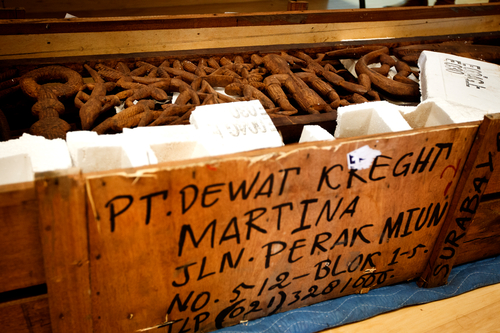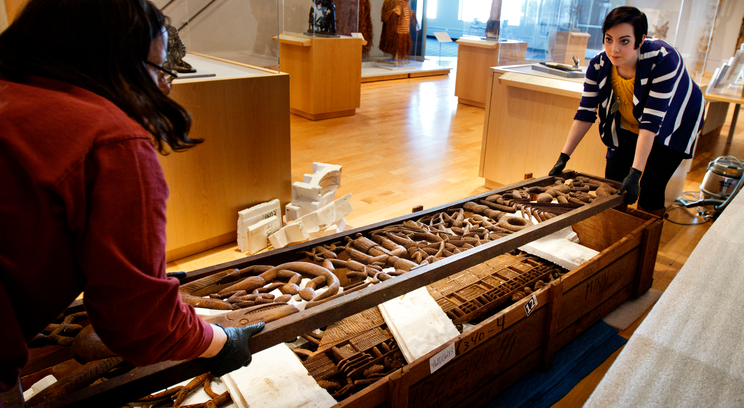Three new Asmat carvings were recently uncrated in The Gallery.
American Museum of Asmat Art Director Julie Risser and Art History graduate assistant Abby Hall carefully pried open the large crate that contained all three and anxiously anticipated seeing the carvings for the first time.
Just before the pieces were revealed, Risser commented on the coincidental timing of their arrival. "It is really appropriate that the crate arrived during our exhibition about master carvers," referring to the Wowipitsj: Man, Myth, Legend exhibition now on display in The Gallery. "I am really curious to see the details of the works."
After the pair "gloved up," they reached into the crate and carefully lifted out the first piece. Hall said, "this is gorgeous."

These Asmat carvings started in Agats, Indonesia and passed through Singapore and New York before arriving at St. Thomas. (Photo by Mike Ekern '02)
The carvings were commissioned in 2011 from Rufus Sati, a well-known Asmat master carver. Each piece represents one of the three pillars of the Asmat culture. Risser was present in Papua as Sati made his first notches in the largest piece, which represents the relationship of people with people. The second piece represents the relationship of people with the natural world, and the third represents the relationship of people with the spirit world.
The new pieces will fill a niche near the ceiling on the eastern wall of The Gallery on the second floor of the Anderson Student Center, which is home to the AMAA@UST. They are expected to be installed by the end of spring semester.
Risser is pleased with the carvings but acknowledges there is repair work to be done. "We work with a great conservator," she said. "It looks like the repair work will be fairly minor." The delicate carvings began their journey on Dec. 26 when they departed by boat from the city of Agats in Indonesia. They arrived at St. Thomas on March 21 by way of Singapore, then New York.
The American Museum of Asmat Art at the University of St. Thomas is a collection of more than 2,000 pieces – ranging from sculptures to fiber art to shields – created by the Asmat people of Indonesia.







